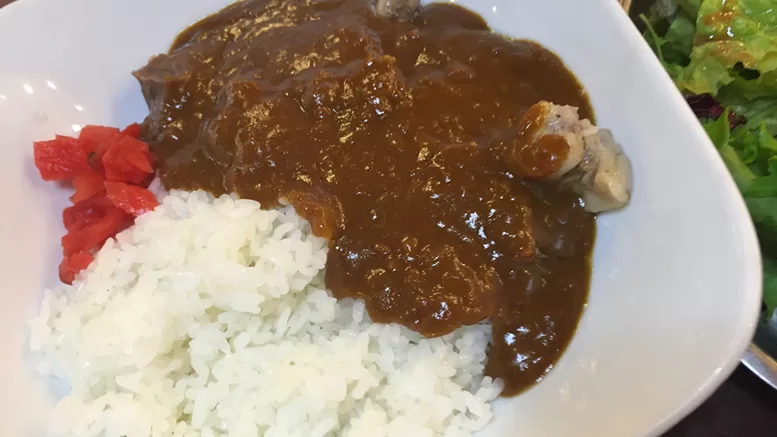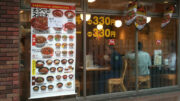You might not expect to find curry on a Japanese menu, but it’s actually quite common, extremely popular, and relatively inexpensive across Japan.

It’s believed that the first Japanese person to try curry was Kenjiro Yamakawa, a 16-year-old member of the Aizu Byakkotai warriors, who was served the spicy dish on board a ship bound for the United States in 1871. However, curry didn’t become widely known in Japan until some years later, when it was introduced by the British, who had adopted curry during their colonial administration of India in the late 1800s.
Japanese-style curries began to appear around 1912, and by the early 1920s, the first commercial curry products entered the market. Minejiro Yamazaki, the founder of the S&B brand, produced the first Japanese curry for sale—a product still sold to this day.
The Japanese version of curry is less complex and not as intensely spiced as many Indian curries. Typically, it’s a mildly spicy and slightly sweet gravy served over rice with small amounts of meat and vegetables. It’s considered a comfort food in Japan and is beloved for its warmth and simplicity.
Japanese curry is also remarkably easy to make at home. Brands like S&B and Golden Curry are available in many Asian sections of supermarkets around the world. To prepare it, meat and vegetables are browned, water is added, followed by blocks of curry roux (which resemble firm, waxy chocolate). These dissolve into the water to form a rich gravy, and after a brief simmer, the dish is ready to eat.
Curry is sold at many fast food chains and vending machine restaurants such as Yoshinoya, Sukiya, and Matsuya, as well as in countless small eateries and family restaurants. It’s typically made with beef, though pork and chicken are also common. Standard vegetables include onion, carrot, and potato, with some Japanese-style additions depending on the region or household.
Curry is most often served over white rice, in a dish called kare raisu (カレーライス), and is usually garnished with a few pickles such as fukujinzuke or rakkyo. Beyond the basic curry rice, you’ll find many delicious variations. A popular one is katsu curry, which pairs curry with a crumbed meat cutlet, usually pork or chicken. Another favourite is kare omurice—a fluffy omelette over rice topped with curry. There are also noodle-based versions, like kare udon, where the thick curry sauce coats chewy udon noodles.
One unique item worth trying is curry pan, a deep-fried bread roll filled with rich curry. It makes for a fantastic snack or an easy introduction to Japanese curry.




